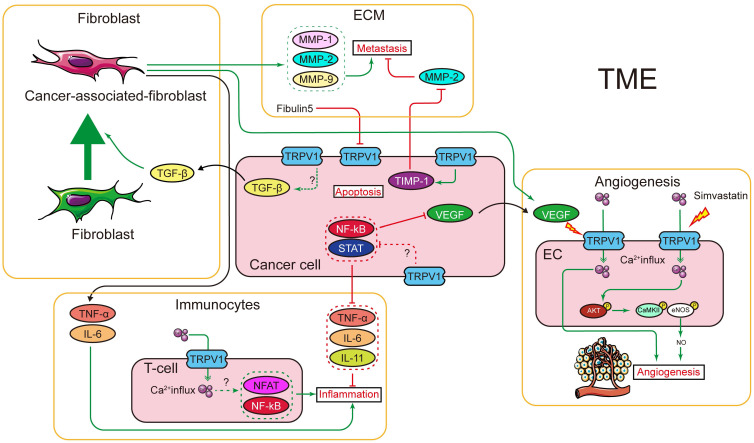Figure 3.
Interaction between TRPV1 and tumor microenvironment. Using transgenic mice, TRPV1 was shown to regulate TGF-β, which is the major factor that activates fibroblasts and transforms the fibroblasts into CAF. The CAF can secret several cytokines and factors, most of which are TME components, e.g., MMPs (regulates collagen in ECM), TNF-α and IL-6 (trigger inflammation), and VEGF (promotes angiogenesis). In cancer cells, TRPV1 was shown to regulate the expression of several inflammation factors, probably through NFκB and STAT signaling pathways. In immunocytes, TRPV1 is important for T-cell signal transduction. Additionally, TRPV1 can regulate the ECM by promoting TIMP-1 expression. In turn, fibulin 5, an ECM component, downregulates TRPV1 expression in cancer cells. Furthermore, TRPV1 was shown to promote angiogenesis by mediating Ca2+ influx and, subsequently, activating the AKT-CaMKII-eNOS signal pathway. The TRPV1 channel function can also be elicited by VEGF, but it is unclear if it shares the same downstream signal.

